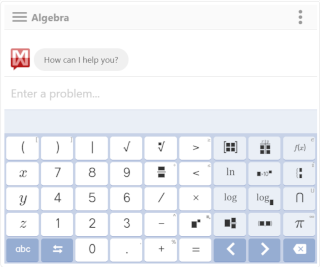
We have lots of free resources and videos to help you prepare for the SAT. These materials are for the redesigned SAT which is for you if you are taking the SAT in March 2016 and beyond.
Share this page to Google ClassroomProblem Solving and Data Analysis includes questions that test your ability to
There are many ways that you can be tested and practicing different types of questions will help you to be prepared for the SAT.
The following video lessons will show you how to solve a variety of problem solving and data analysis questions in different situations.
Ratio, Proportion, Units and Percentages
There will be questions on ratios. A ratio represents the proportional relationship between quantities. Fractions can be used to represent ratios.
There will also be questions involving percentages. Percent is a type proportion that means “per 100”.
You will need to convert units when required by the question. One way to perform unit conversion is to write it out as a series of multiplication steps.
Charts, Graphs and Tables
The questions in Problem Solving and Data Analysis focus on linear, quadratic and exponential relationships which may be represented by charts, graphs or tables. A model is linear if the difference in quantity is constant. A model is exponential if the ratio in the quantity is constant.
A line of best fit is a straight line that best represents the data on a scatterplot. It is written in y = mx + c.
You need to know the formulas for simple and compound interest.
Simple Interest: A = P(1 + rt)
Compound Interest: A = P(1 + r/n) nt
where A is the total amount, P is the principal, r is the interest rate, t is the time period and n is the number of times the interest is compounded per year.
Probability measures how likely an event is. The formula to calculate the probability of an event is:
Probability = (number of favorable outcomes)/(total number of possible outcomes)
Data and Statistics
You need to know that mean, median, and mode are measures of center for a data set, while range and standard deviation are measures of spread.
You will not be asked to calculate the standard deviation of a set of data, but you do need to understand that a larger standard deviation means that the values are more spread out from the mean. You may be asked to compare the standard deviation of two data sets by approximating the spread from the mean.
You do not need to calculate the margins of error or confidence level, but you do need to know what these concepts are and how to interpret them in context. Take note that the questions in the SAT will always use 95% confidence levels. Some questions may give you the confidence level and ask you to find the value for which the interval applies.
When the confidence level is kept the same, the size of the margin of error is affected by the standard deviation and the sample size. The larger the standard deviation, the larger the margin of error. The larger the sample size, the smaller the margin of error.
The margin of error and confidence interval are estimates for the entire population and do not apply to values of individual objects in the populations.
The results of a sample can be generalized to the entire population only if the subjects in the sample are selected randomly.
Conclusions about cause and effect can appropriately be drawn only if the subjects are randomly assigned to treatment.

Try the free Mathway calculator and problem solver below to practice various math topics. Try the given examples, or type in your own problem and check your answer with the step-by-step explanations.
We welcome your feedback, comments and questions about this site or page. Please submit your feedback or enquiries via our Feedback page.